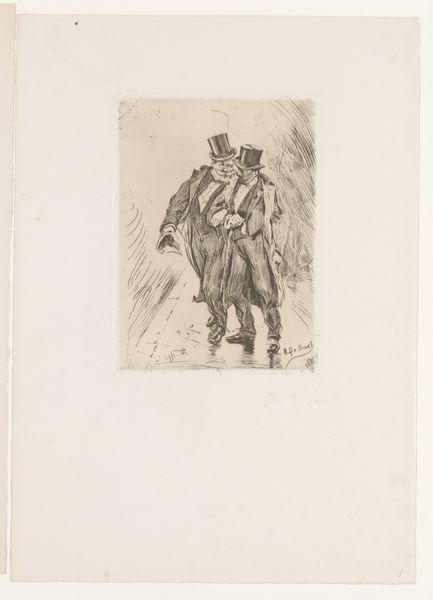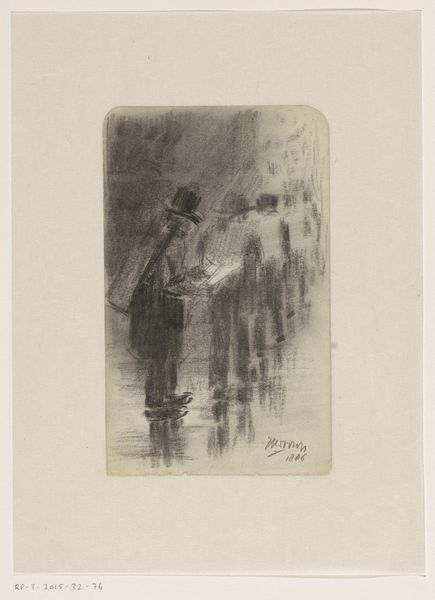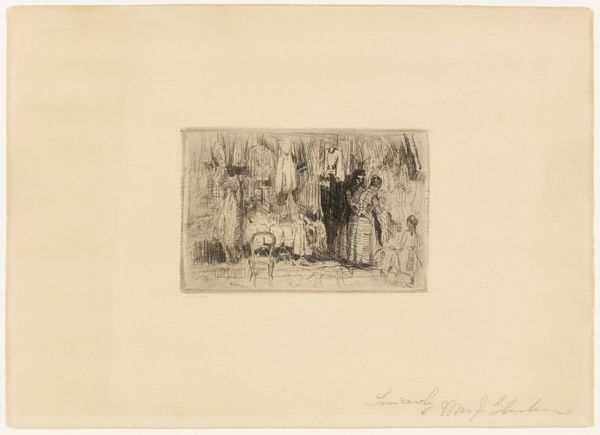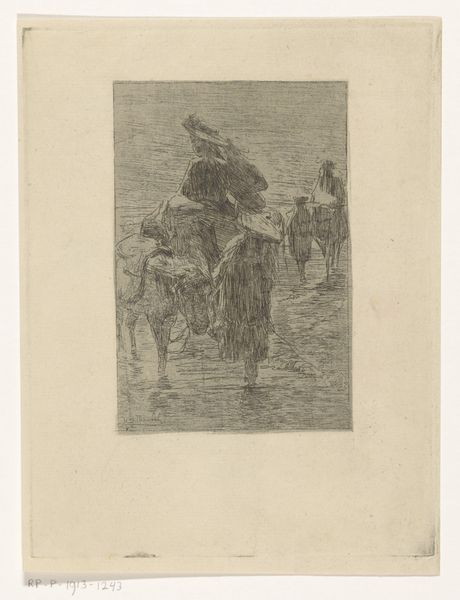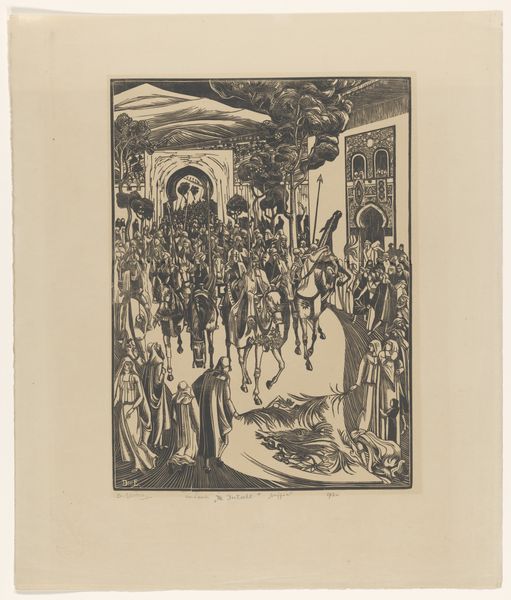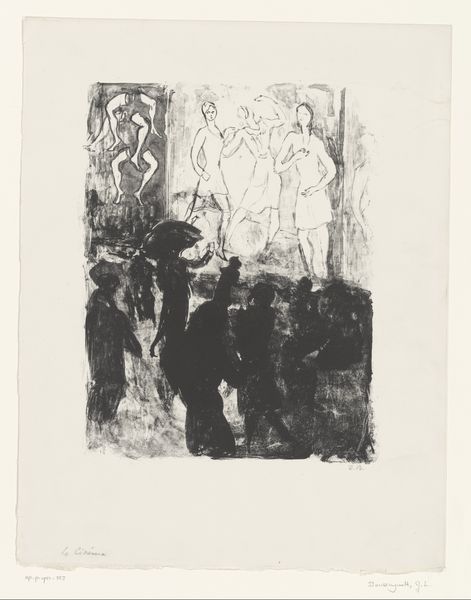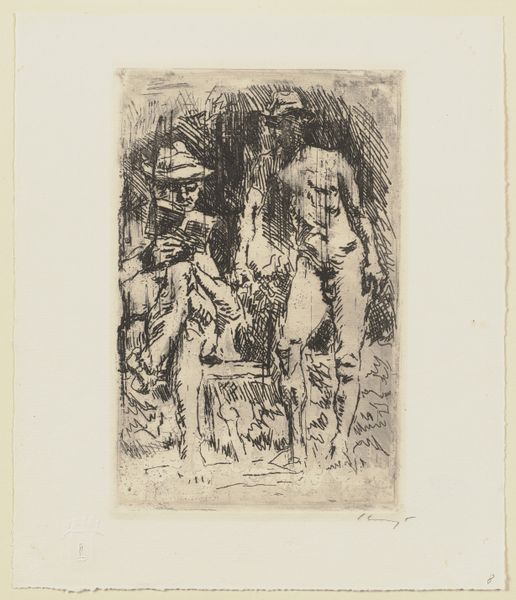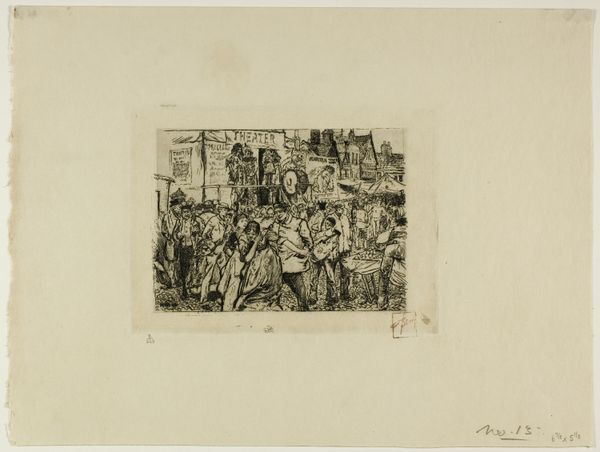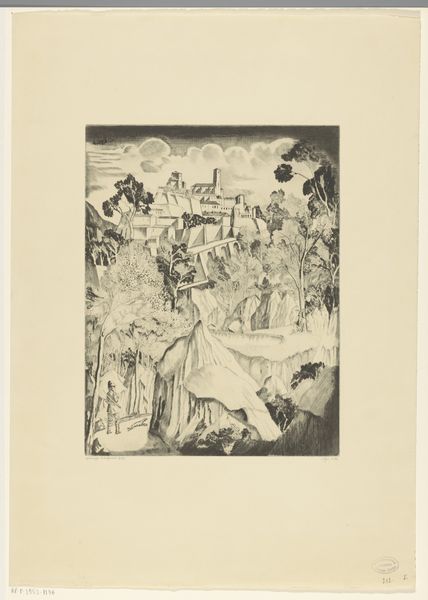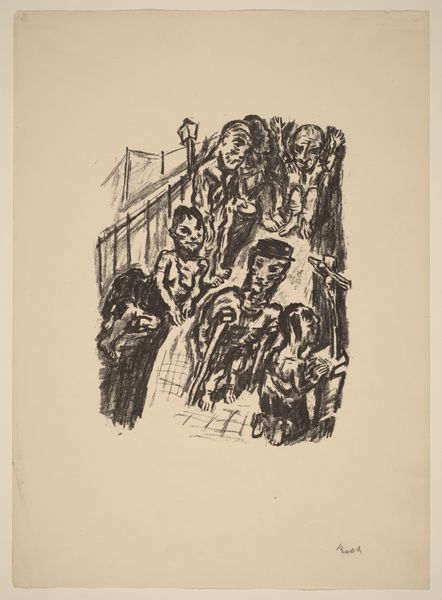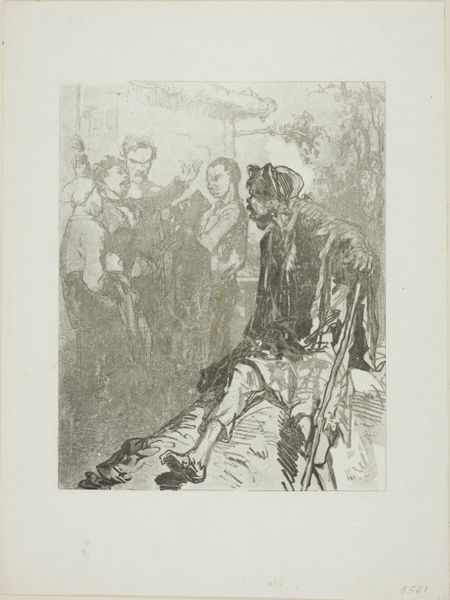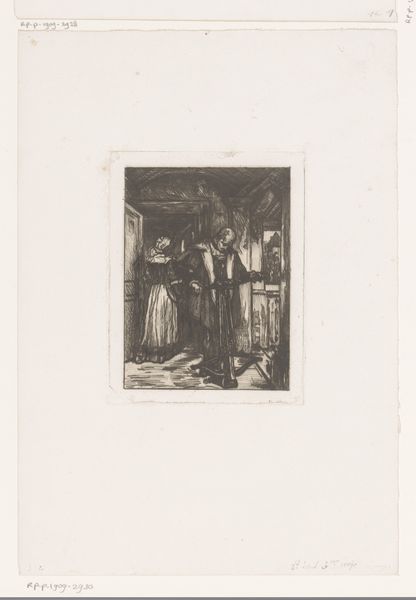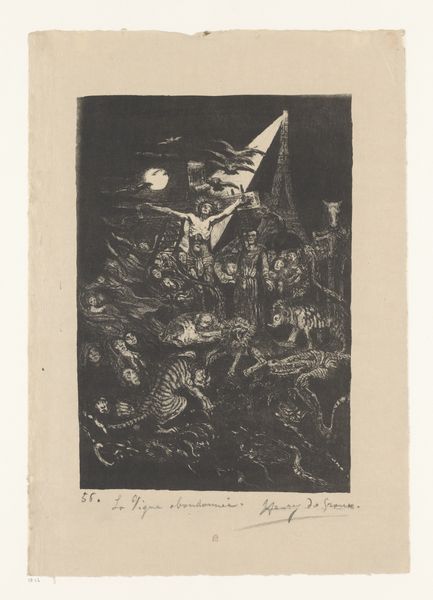
drawing, print, etching
#
portrait
#
drawing
#
ink drawing
# print
#
pen sketch
#
etching
#
pencil sketch
#
german-expressionism
#
figuration
#
expressionism
#
line
#
cityscape
Copyright: Public Domain
Curator: Before us we have Ernst Ludwig Kirchner's "Ansprachen auf der Strasse II," or "Street Scene II," an etching dating back to 1914. It’s currently held in the Städel Museum. Editor: What immediately strikes me is the stark, almost brutal quality of the lines. There's a palpable anxiety conveyed through the figures and their claustrophobic proximity to one another. It almost feels like we're observing a collective neurosis. Curator: Indeed. Kirchner's involvement with the Die Brücke movement heavily influenced his portrayal of urban life. There was a societal apprehension at the time towards burgeoning urban life and societal ills. We must note his representation of modern life reflected a critical engagement with societal norms. Editor: Absolutely, and it’s visible in the figures themselves. Notice the hats and formal attire; those visual elements communicate class and decorum, which is contrasted so boldly by the artist's stylistic rendering. I think this illustrates his critical commentary on societal conventions, almost making them seem like suffocating masks. Curator: These sharp lines and truncated forms are visual indicators of Expressionism. It demonstrates an interest in revealing psychological and emotional realities that lie underneath polite social life, and certainly speaks to broader anxiety present in Germany just before the Great War. The subject also offers historical perspective; public gatherings and discourse are illustrated here as a spectacle. Editor: Right. Looking closer, even the presence of the dog becomes meaningful; in Western art, dogs are symbols of loyalty, but this animal appears more as a wraith-like presence than as a steadfast companion, reflecting how values have deteriorated, and emphasizing the impermanence of social structures. I think Kirchner succeeds in visually destabilizing these concepts, leaving them as wisps of their former cultural association. Curator: And thinking about this work within the wider scope of Kirchner’s career, the image reiterates similar tensions in other graphic works and paintings; however, it’s distinct qualities also makes this etching especially crucial for examining cultural change occurring around this time. Editor: It’s an impactful piece, to be sure. The way the seemingly simple marks and figures assemble to trigger deep unrest makes the image an exemplar of this time and stylistic period. Curator: Absolutely. Considering it within Kirchner's entire career as well as contemporary themes underscores the work’s significance. Editor: It will linger in the mind, I'm sure. A striking window into both the artist's mind, and the anxieties of a society hurtling toward war.
Comments
No comments
Be the first to comment and join the conversation on the ultimate creative platform.
